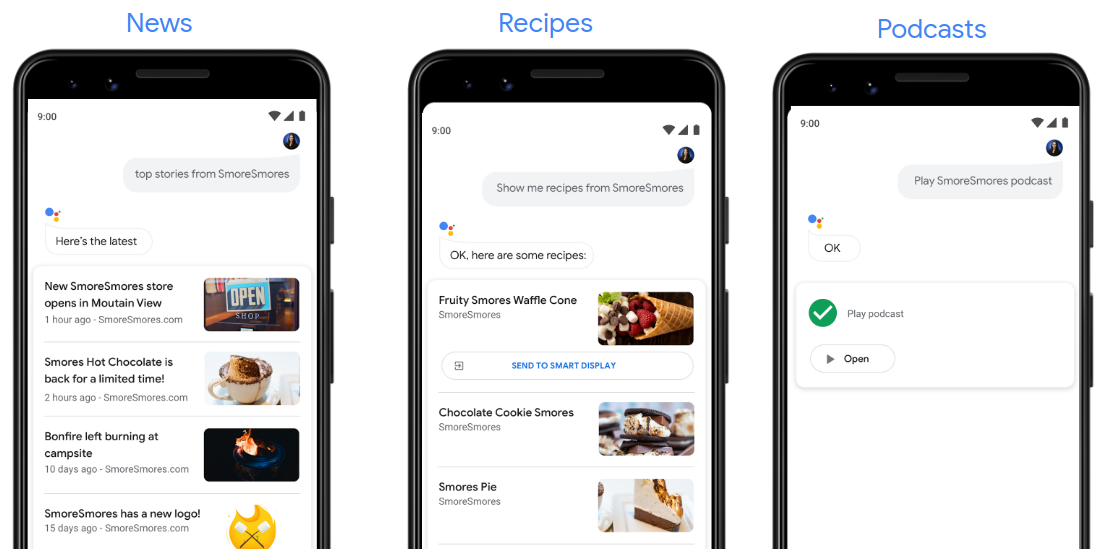Data terstruktur memberi tahu Google tentang jenis konten yang Anda buat, sehingga kita dapat menampilkannya kepada pengguna secara interaktif. Selain menampilkan konten sebagai hasil kaya di Google Penelusuran, kami dapat membaca markup Anda untuk secara otomatis membuat Action yang menyajikan konten Anda di Asisten Google dan membuat entri dalam direktori Asisten. Saat pengguna meminta salah satu jenis konten yang tersedia kepada Asisten, kami dapat menampilkan Action Anda.
Jika Anda baru saja memulai, pelajari lebih lanjut cara kerja data terstruktur.

Memublikasikan konten
Google dapat membuat berbagai Action berdasarkan konten web yang Anda sediakan. Lihat daftar jenis konten yang didukung berikut untuk mempelajari cara membuat Tindakan untuk setiap jenis:
| FAQ | Pengguna yang meminta informasi kepada Asisten Google mengenai suatu topik dapat menerima konten FAQ Anda untuk memberikan jawaban terbaik. Buat markup untuk konten FAQ dan kami dapat otomatis membuat Action dengan informasi Anda. Untuk informasi tentang Tindakan FAQ yang dibuat dengan markup, lihat dokumentasi Tindakan FAQ. |
| Media | Pengguna dapat menemukan konten Anda di Google Penelusuran dan Asisten, serta memulai pemutaran konten tersebut langsung di aplikasi atau platform Anda. Untuk mengetahui informasi tentang cara menyiapkan konten media, lihat dokumentasi Media Actions. |
| Berita | Pengguna dapat melihat konten Anda melalui Asisten Google sebagai bagian dari Google Berita, termasuk carousel artikel teratas. Saat Anda menambahkan data terstruktur ke halaman AMP, kami dapat menampilkan konten berita Anda di Asisten Google. Untuk mengetahui informasi tentang cara menyiapkan konten artikel berita, lihat dokumentasi data terstruktur artikel. |
| Podcast |
Pengguna dapat menemukan podcast Anda di direktori Asisten dan memutar episode di perangkat mereka menggunakan Asisten Google. Buat feed RSS untuk podcast Anda dan kami dapat otomatis membuat Action untuk podcast tersebut. Untuk mengetahui informasi selengkapnya tentang menyiapkan feed podcast, lihat dokumentasi Podcast. |
